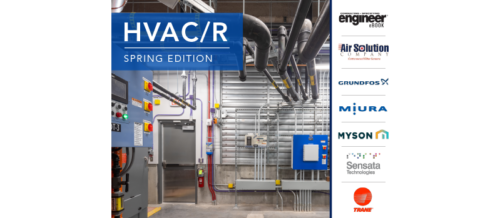High-performance medical and educational building design: Codes and standards
The design of high-performance medical and educational projects are challenging and need to meet specific standards, codes, and trends. Specific codes and standards are critical to follow when designing a building.
Respondents
Joseph A. D’Alù, PE, LEED AP, CEM, Division Manager, RMF Engineering, Charlottesville, Va.
TG Davallou, LEED AP, Partner, Alfa Tech Consulting Engineers, San Francisco
Sean Donohue, PE, LEED AP, Director, Colorado Springs, Jensen Hughes, Colorado Springs, Colo.
Anthony B. Preteroti, Associate Vice President, CannonDesign, Grand Island, N.Y.
Teresa Rainey, PE, LEED Fellow, Director of High-Performance Design, EYP Architecture & Engineering, Washington, D.C.
CSE: How has the Affordable Care Act changed your approach to the design/engineering of high-performance medical campus projects?
Donohue: One of the effects has been the expansion of hospital licenses to offsite campuses previously run by independent physicians. This has created additional scrutiny for previously unregulated buildings.
CSE: Please explain some of the codes, standards, and guidelines you use . Which codes/standards should engineers be most aware of in their design of such projects?
Davallou: They should look for California building code standards, California Electrical Code, the Division of the State Architect standards, the CALGreen code, and LEED Version 3 and Version 4.
Donohue: NFPA 101: Life Safety Code and NFPA 99: Health Care Facilities Code are two primary health care references. Some states also adopt the American Society for Healthcare Engineering’s Facilities Guidelines Institute guidelines. For all projects, NFPA 72: National Fire Alarm and Signaling Code is the primary reference for fire alarm and mass notification. Another excellent resource is Designing Mass Notification Systems: A Pathway to Effective Emergency Communications, 2013 Edition by Wayne Moore, PE, FSFPE. The International Code Council series of codes is also used by a majority of municipalities across the country.
CSE: How have the International Building Code, Society for College and University Planning (SCUP), The Joint Commission, NFPA, ASHRAE, and other organizations affected your work on high-performance campus projects?
Donohue: The intent of unified codes and standards is to provide a consistent and predictable baseline of requirements. The struggle comes when these different sources conflict with each other. It is important to understand the applicability of each code or standard based on the authority having jurisdiction (AHJ). Always ask yourself who the AHJs are and which standards they enforce.
Davallou: We haven’t seen much effect. There are some differences between ANSI/ASHRAE/IES 90.1-2013—Energy Standard for Buildings Except Low-Rise Residential Buildings and the California Energy Commission’s Title-24 energy efficiency standards.
CSE: How do you work with the architect, owner, and other project team members to make the electrical/power system both flexible and sustainable at the same time?
Preteroti: Communication is key. Understanding the client’s current and future needs helps you to properly size spaces and equipment. Using modular equipment aids in flexibility and sustainability; multiple, smaller units can provide better efficiency and control due to load variations. Fewer units can be run for peak shaving or emergency situations when a lower demand load is required. Additional units can be added as the building expands or if the program changes. Conversations with the design team can help create space to support new and future equipment without overcompensating. Space within a building is always at a premium.
Davallou: We employ coordination and a page-turn process.
CSE: Describe unique security and access-control systems you have specified in high-performance campus projects.
Davallou: We haven’t specified unique security and access-control systems for a campus. However, we have for other facilities with sensitive compartmented information facilities (SCIF), which require die-electric breaks for all conduits penetration.
Do you have experience and expertise with the topics mentioned in this content? You should consider contributing to our CFE Media editorial team and getting the recognition you and your company deserve. Click here to start this process.





